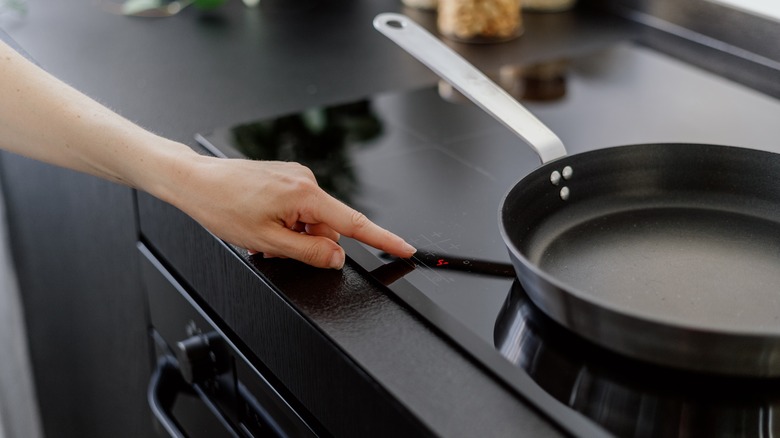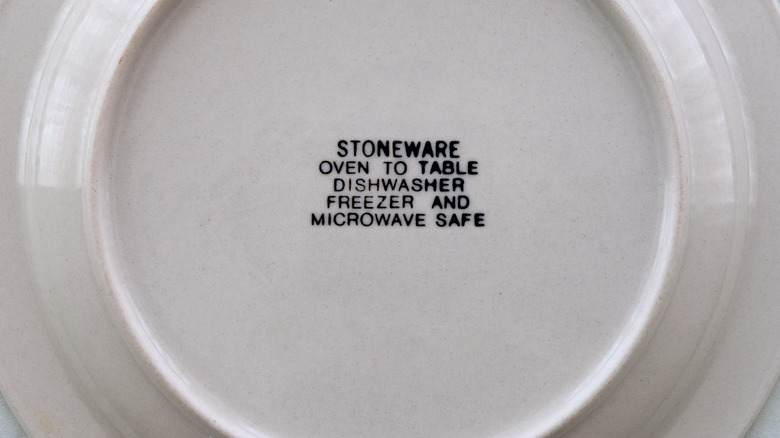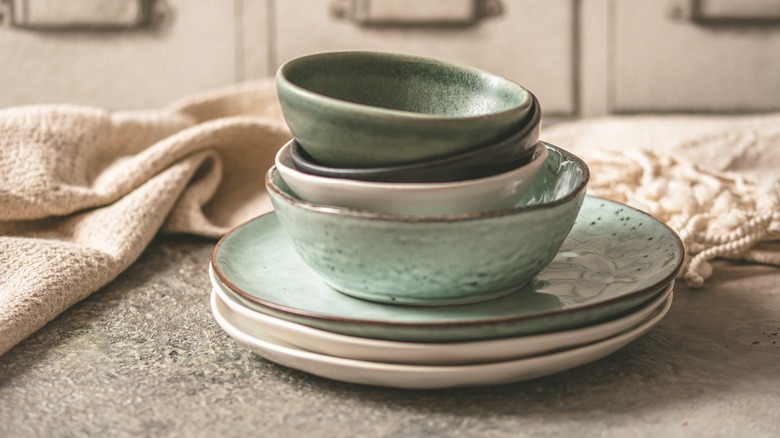The Stove Top Mistake That Can Cause Stoneware To Crack
In most cases, stoneware is a solid choice for dishes and pans and the like: It's sturdier than porcelain and less porous than earthenware. It can usually go into the dishwasher, the microwave, or even the oven without any trouble (specific cookware will have specific instructions about this). However, it's not designed for everything. A general rule of thumb is to avoid placing any stoneware cookware anywhere on an electric stove.
In short, a stove top — whether it's electric or gas — can cause the surface of ceramics like stoneware to scratch and crack. This is because many materials have a tendency to slightly expand or contract when in contact with heat. If the heat rises too much, too quickly, the abrupt change can cause the object to break itself, in a sense. Sometimes this can mean shattering, but in the case of stoneware, you're likely to find a crack once you take it off the stove. Plus, this "cracking" can go both ways: Just as a stove top can crack stoneware, sometimes the stoneware can also crack the glass surface of an electric stove.
Thermal shock can break your cookware
This phenomenon, where materials like clay expand in contact with heat and contract once they're cooler, is known as "thermal shock." It's why taking a hot pan directly out of the oven and then washing it in cold water is an easy way to ruin pans, because the major, immediate change in temperature causes it to contract at an unnatural speed and eventually warp its shape. Thermal shock happens to most cooking materials, although it affects certain ones more severely.
Despite the name, stoneware is a ceramic made from clay (actual cookware made from stone does exist too). Clay and glass are both brittle materials with poor tensile strength, which means they're more likely to buckle under the pressure of thermal shock. A stove in particular can cause damage because the dish is so close to the heat source, unlike an oven. Manufacturers usually call this "direct heat" when a dish is right on the burner; placing ceramic in toaster ovens can lead to the same problem.
How to keep your stoneware in one piece
Sometimes a specific piece of cookware will say it's stove safe, which means it's designed to withstand that sort of pressure, often by adding aluminum or a similar material into the base. Even in those cases, there are certain precautions you can take to protect them from damage. It's best to stick to low or medium heat when using ceramics, rather than high heat. It also helps to heat the stoneware more gradually than you might do otherwise to lower the chances of thermal shock.
In general, it's better to stick to metals like aluminum, stainless steel, copper, and titanium when working with direct heat like a stove top. None of this is to say stoneware shouldn't be used at all, because this isn't true: It's a great choice for other kinds of cooking because of how well it heats food evenly, and humans have cooked with stoneware for thousands of years. Just be cautious, and always check the manufacturer's instructions.


